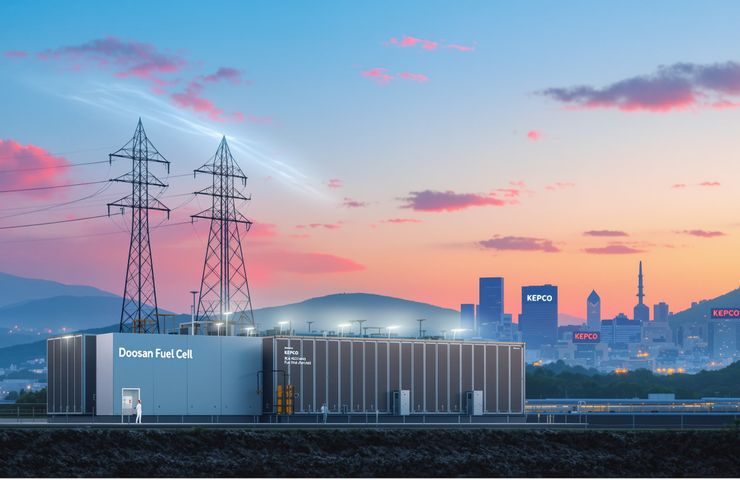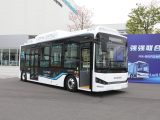
Hydrogen Fuel Cells: Doosan Fuel Cell’s 20-Year, KRW96.4bn Power Deal with KEPCO
November 20, 2025Ever wondered how hydrogen power can move from pilot projects to a mainstay on the grid?
On November, 2025, Doosan Fuel Cell Co., Ltd. and Korea Electric Power Corporation (KEPCO) struck a 96.4 billion KRW deal to feed hydrogen-generated electricity into the national grid for the next 20 years. It’s a huge milestone—one of the largest long-term hydrogen pacts in South Korea—right in line with the country’s sprint toward 2050 carbon neutrality.
A Deal to Watch
This isn’t your everyday utility contract. Doosan Fuel Cell is set to roll out its battle-tested phosphoric acid fuel cells (PAFC) now—and down the road, its slick solid oxide fuel cells (SOFC)—to feed clean power into KEPCO’s grid. With a whopping 62% slice of South Korea’s hydrogen power market, they aren’t just a supplier; they’re the cornerstone of a nascent hydrogen economy built on advanced fuel cell technology.
Fueling South Korea’s Hydrogen Ambitions
South Korea’s move into green hydrogen didn’t happen by chance. Lacking in local fossil fuels and leaning heavily on energy imports, the country sketched out its hydrogen playbook back in the early 2020s. The goal? Cut emissions and beef up energy security. Then in 2023, regulators threw open a dedicated hydrogen power bidding market, setting the stage for this blockbuster deal. For KEPCO, snapping up hydrogen-generated power isn’t just about curbing emissions—it’s a smart way to mix up its energy portfolio and fine-tune its future hydrogen production plans.
Under the Hood: PAFC & SOFC
Curious how these hydrogen fuel cells actually crank out the juice? Take the PAFC setup: hydrogen meets the anode, splits into protons and electrons. The electrons speed through an external circuit—voilà, electricity—while the protons glide through a phosphoric acid electrolyte to reunite with oxygen at the cathode, spawning nothing but water. You get around 40% efficiency, but if you feed it green hydrogen from renewables-powered electrolysis, your carbon footprint pretty much disappears. And if that’s not cool enough, Doosan’s SOFC stack (still in pilot) promises even better efficiency and a wider fuel palette down the road.
Ripple Effects
Sounds great, but what’s the domino effect? A 20-year pact like this shouts one thing: sustainable energy from hydrogen is no flash in the pan—it can scale. Electrolyzer makers, compression and storage outfits—they’re all looking at ramped-up orders. That kind of demand crunches prices and fuels new R&D—picture harder-wearing membranes, budget-friendly catalysts, and next-gen control systems. And on the policy side, this deal could be the playbook for other Asian players itching to de-risk their own forays into fuel cell technology.
Why It Matters
But why should you care? Well, beyond ticking off that carbon neutrality checkbox, there’s a big industrial win. South Korea’s own brainchild—fronted by Doosan Fuel Cell—gets a solid home turf launch before it branches out internationally. And KEPCO? It’s sharpening its hydrogen chops, building know-how it can package alongside its power engineering services. The payoff? Cleaner air, tougher grids, and a leg-up for Korean brands in the competitive world of fuel cell technology.
Looking Ahead
So, is this the dawn of a hydrogen heyday in Asia? It sure feels like it. As electrolyzer production ramps up and renewable capacity expands, green hydrogen is poised to get more wallet-friendly. Before long, we could see hybrid setups—fuel cells alongside wind turbines or solar arrays—tackling those pesky power swings. And don’t rule out hydrogen-powered cargo ships or big rigs, right up to KEPCO’s budding refueling stations.
When you strip away the big figures and fancy headlines, this partnership is really a proof point: hydrogen fuel cells can hold their own in a live power network. If you’re on the decarbonization beat, watch how Doosan’s stacks fire up and how KEPCO threads that clean juice into its grid. The next chapter in sustainable energy? I’d bet it’s inked in hydrogen.
About the Companies
Doosan Fuel Cell Co., Ltd. is the brains behind a range of fuel cell technology—from trusty PAFC and PEMFC to the next-gen SOFC units—in sectors from power plants to ships and vehicles. A 2020 KRX listing and a 62% stake in South Korea’s hydrogen scene give it serious street cred.
Korea Electric Power Corporation (KEPCO) runs the show when it comes to electricity in South Korea—generation, transmission, you name it. They’re at the heart of the country’s push for sustainable energy, partnering closely with the government to hit those ambitious clean power and carbon-neutral targets.


 With over 15 years of reporting hydrogen news, we are your premier source for the latest updates and insights in hydrogen and renewable energy.
With over 15 years of reporting hydrogen news, we are your premier source for the latest updates and insights in hydrogen and renewable energy.